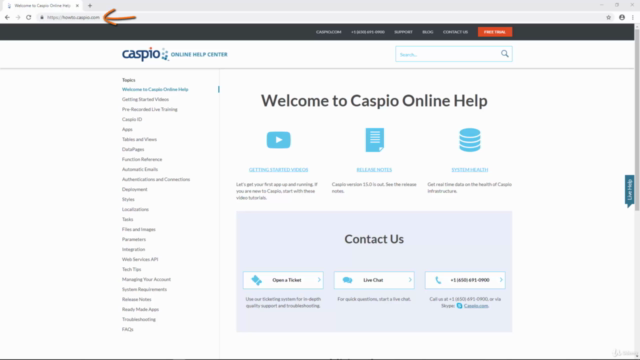How to Create a Knowledge Base Application With Caspio

Why take this course?
Course Title: How to Create a Knowledge Base Application With Caspio
Instructor: Ned Pajic
🚀 Course Headline: Unlock the Power of Information with Caspio – Build Your Own Knowledge Base Application Without Writing a Line of Code! 🌟
Course Description:
Embark on a journey to become a master in creating knowledge management systems with ease and efficiency using Caspio's intuitive no-code platform. In this comprehensive course, you'll learn the ins and outs of designing a robust knowledge base application that can serve as the central hub for all your important information. Whether you're looking to create an internal documentation repository, a customer support portal, or a comprehensive FAQ system, this course has got you covered!
Why Take This Course?
- User-Friendly: No prior programming experience is required; Caspio's platform allows you to build complex applications with simple clicks.
- Versatile: Learn how to tailor your knowledge base to the specific needs of your department, organization, or client.
- Time-Saving: Save hours, if not days, by using Caspio's rapid application development tools.
- Scalable: Start small and grow big – your knowledge base can evolve with your organization's needs.
- Expert Guidance: Learn from industry expert Ned Pajic, who will guide you through each step of the process.
What You Will Learn:
- 🛠️ Understanding Caspio's Platform: Get acquainted with the Caspio interface and learn how to navigate its features effectively.
- 🗂️ Designing Your Data Structure: Discover how to organize and structure your data in a way that promotes efficiency and ease of access.
- 🔍 Building Your Application: Step-by-step instructions on how to build out the functionality of your knowledge base, including search capabilities, user management, and data display options.
- 📈 Customizing for Your Needs: Tailor your application with custom forms, views, and workflows to meet the specific requirements of your users or stakeholders.
- 🚀 Deploying and Managing Your Knowledge Base: Learn best practices for launching your application and managing it post-deployment, ensuring it remains an effective tool over time.
Course Outline:
-
Introduction to Caspio'
- Overview of Caspio's platform and its capabilities.
- Setting up your Caspio account and dashboard.
-
Planning Your Knowledge Base Application
- Identifying the goals and scope of your application.
- Designing user-friendly data entry forms and views.
-
Building Your Database Structure
- Creating tables, fields, and relationships within Caspio.
- Importing existing data into your new database structure.
-
Implementing User Interfaces
- Designing user dashboards and custom pages.
- Setting up permissions and roles for different users.
-
Adding Advanced Features
- Incorporating search functionalities, reports, and dashboards.
- Using workflows to automate processes within your application.
-
Testing and Refining Your Application
- Best practices for testing your knowledge base application.
- Gathering feedback and iteratively improving your system.
-
Launching and Managing Your Knowledge Base
- Strategies for launching your application to users.
- Monitoring performance, managing updates, and scaling as needed.
Who This Course Is For:
- Business owners, managers, and IT professionals looking to streamline information access within their organization.
- Individuals responsible for creating or maintaining internal knowledge bases or customer support systems.
- Anyone interested in leveraging the power of no-code platforms to solve complex problems.
What You'll Get:
- A step-by-step guide to creating a knowledge base with Caspio.
- Access to course materials, including video tutorials and downloadable resources.
- Ongoing support from Caspio community forums.
Ready to turn your organization's data into an organized and powerful knowledge base? Enroll in "How to Create a Knowledge Base Application With Caspio" today and start your journey towards becoming a no-code hero! 🦸♂️✨
Course Gallery




Loading charts...